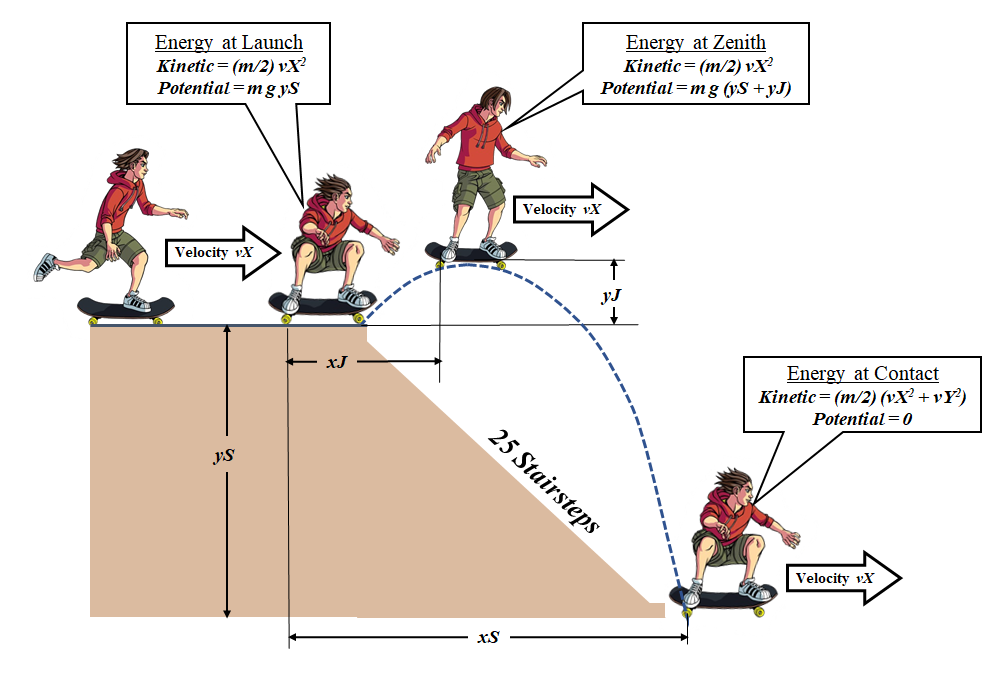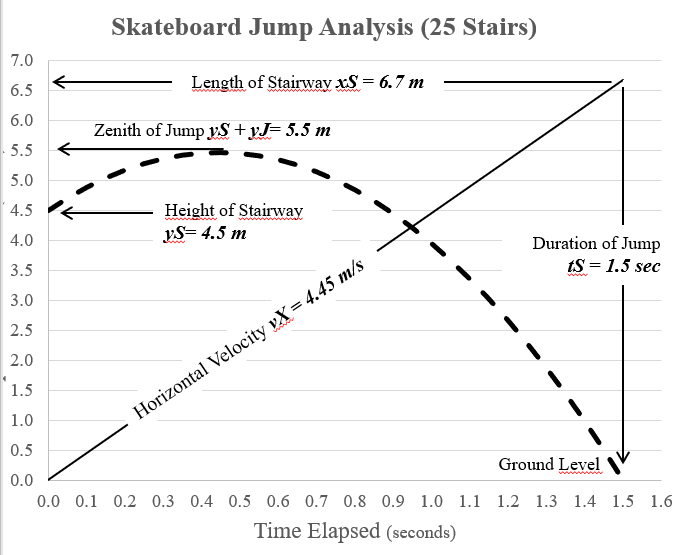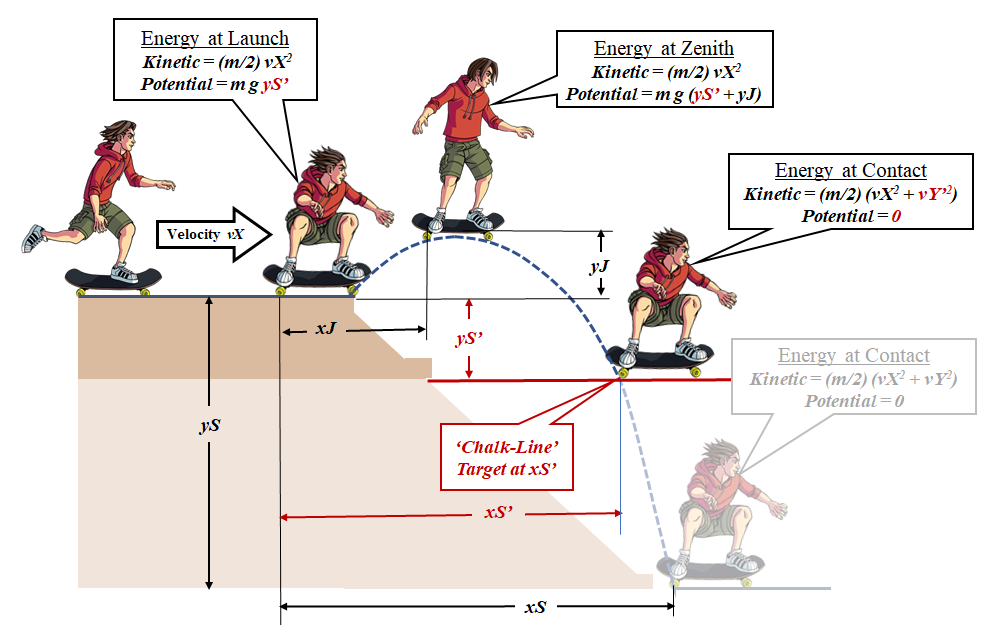Copyright ©2020 by Paul Niquette. All rights reserved. Skateboarding
is an action sport enjoyed by more than 11
million skateboarders worldwide and will be
represented in the 2020
Summer Olympics. The Skateboard Mystery puzzle is
based on an analysis of
Aaron Homoki's record-setting
jump using the law of conservation
of energy as reprised in this
sketch...
 ...wherein one observes an apparent -- and
unlawful -- destruction of
energy immediately
after the skateboard contacts the ground.
The amount 'destroyed' is equal to the
potential energy at zenith m g (yS + yJ)...
If anything, vX may actually decrease at the completion of the jump, inasmuch as, with its wheels temporarily indented, the skateboard would be briefly 'braked', tending to throw the skater forward.Of course, sound energy is released by the impact of the wheels on the pavement, but whether that would account for the loss of potential energy seems quite doubtful. The likely explanation is that the skater absorbs most of the energy in eccentric muscular contraction. (Nota bene, Homoki expended plenty of concentric muscular contraction while [a] climbing those 25 stairs carrying his skateboard, [b] accelerating to vX, then [c] jumping upward in the launch.) Now, the subject of how skeletal muscles work is fascinating but beyond the scope of the puzzle.Sophisticated solvers will observe that the horizontal velocity vX acts in reciprocity with the required height of the skater's jump yJ: Faster the skateboard approaches the launch: the lower the required height at the zenith. The relationship can be expressed in this general equation for any skateboard stairway jump... vX = xS / [2 (yJ + yS) / g]1/2Homoki's record-breaking jump of the 25-step stairway is analyzed in the graph below. It is based on the assumption that the height of his jump yJ = 1 meter (39.4 inches) above the top stairstep. The duration of the jump is calculated to be 1.5 seconds, and thus the required horizontal velocity vX = 4.45 m/s (10 mph).  Accordingly, a 10% increase in speed to vX = 4.9 m/s (11 mph) will decrease the duration of the jump by 10% to 1.35 seconds and allow the height of the jump to decrease by 43% so that yJ = 0.57 meters (22.4 inches). The zenith height will be decreased by 7.8% such that yS + yJ = 5.1 meters.Solvers may ask, "What horizontal speed vX would allow Homoki to clear the stairway with no jump (yJ = 0)?" The answer is vX = 7.0 m/s (15.7 mph), which compares to running a 100-meter dash in a leisurely 14.2 seconds. Thus we have a solution to the Skateboard Mystery. Meanwhile, our analysis has produced another Skateboard Mystery that enjoys special significance for Puzzles with a Purpose. Let us consider the practical subject of... Skateboard
Safety
The video
referenced in the Skateboard
Mystery puzzle,
is merely one of many available
on the worldwide web. Unfortunately
some show skateboarding
accidents, and the injury
statistics are grim. Indeed Aaron
Homoki was hospitalized during his repeated
attempts to establish the 25-stair record.
Here is a proposed solution for
consideration by skateboarding enthusiasts who
are determined to set records by interacting
with high objects -- particularly jumping from
the tops of stairways. It calls for
analysis and planning and
may be as effective as the safety
hardware skateboarders might own but --
ugh -- often decline to wear.
 The real Skateboard Mystery: Why would any record-seeking skateboarder not...
|